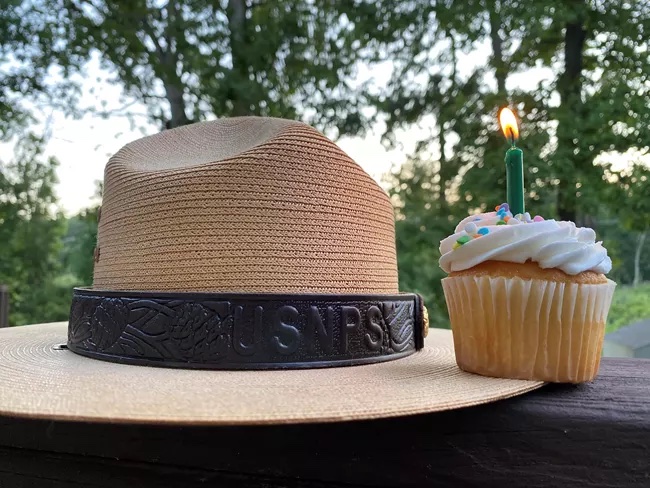Happy 107th birthday to The National Park Service! Created on August 25, 1916 to “preserve unimpaired the natural and cultural resources and values of the National Park System for the enjoyment, education, and inspiration of this and future generations” there are now more than 400 national parks and many programs that reach communities around the country—many in Maryland. One of the best things you can do to celebrate is to visit the sites in person; read on to learn more about NPS sites across the state (and remember to leave no trace)!
ANTIETAM
NATIONAL BATTLEFIELD
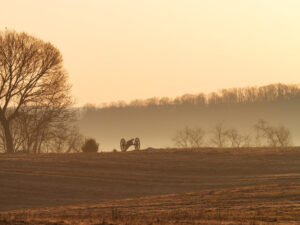
September 17, 1862 was the bloodiest single day in American history. The Battle of Antietam ended the Confederate Army of Northern Virginia’s first invasion into the North and led Abraham Lincoln to issue the preliminary Emancipation Proclamation. Thanks to the dedicated work of countless preservationists over many generations, the Antietam Battlefield is an extremely well preserved landscape.
See Preservation Maryland chronicle some of Antietam’s untold stories.
APPALACHIAN
NATIONAL SCENIC TRAIL
The Appalachian Trail is a 2,190+ mile long public path. Completed in 1937, today the trail is managed by the National Park Service, US Forest Service, Appalachian Trail Conservancy, numerous state agencies and thousands of volunteers. In 2019 a large swath of the Appalachian Mountains crossing West Virginia and Maryland was recently designated by the National Park Service as a National Heritage Area to celebrate the forest’s natural beauty, historical role in providing natural resources fueling America’s growth, and an appreciation for the area’s unique mountain arts, music, and culture.
ASSATEAGUE ISLAND
NATIONAL SEASHORE

BALTIMORE-WASHINGTON
NATIONAL PARKWAY
This 29-mile highway connects Baltimore, MD and Washington, D.C. The parkway has carried visitors to and from the capital city since 1954.
CAPTAIN JOHN SMITH CHESAPEAKE
NATIONAL HISTORIC TRAIL
CATOCTIN MOUNTAIN
PARK
2023 marks 90 years since the Civilian Conservation Corps, a depression-era relief program, was established. In March of 1933, in one of his first acts in office, then President Franklin Delano Roosevelt proposed the creation of the new program, the Civilian Conservation Corps (CCC), which he explained would be, “used in simple work . . . More important, however, than the material gains will be the moral and spiritual value of such work.” The Civilian Conservation Corps, or CCC, was officially established with an executive order on April 5, 1933. Civilian Conservation Corps gave this land a second opportunity and through re-growth, a new role as a recreation area.
CHESAPEAKE & OHIO CANAL
NATIONAL HISTORICAL PARK
Preserving America’s early transportation history, the C&O Canal began as a dream of passage to Western wealth. Operating for nearly 100 years the canal was a lifeline for communities along the Potomac River as coal, lumber, and agricultural products floated down the waterway to market. Today it endures as a pathway for discovering historical, natural, and recreational treasures.
CHESAPEAKE BAY
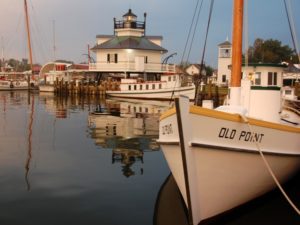
Old Point at the Chesapeake Bay Maritime Museum. Photo from CBMM.
Over 41 million acres are connected through the waters that flow to and through Chesapeake Bay. The National Park Service “strives to connect people to the opportunities and adventures throughout the watershed.”
CIVIL WAR DEFENSES OF WASHINGTON
On forested hills surrounding the nation’s capital are the remnants of a complex system of Civil War fortifications. These strategic buttresses transformed the young capital into one of the world’s most fortified cities. By 1865, 68 forts and 93 batteries armed with over 800 cannons encircled Washington, DC. Today, you can visit 17 of the original sites now managed by the National Park Service.
CLARA BARTON
NATIONAL HISTORIC SITE
Clara Barton dedicated her life and energies to help others in times of need – both home and abroad, in peacetime as well as during military emergencies. Glen Echo was her home the last 15 years of her life and the structure illustrates her dedication and concern for those less fortunate than herself. Guided tours: Fri, Sat, & Sun. 1, 2, 3, & 4 PM First Floor only, free
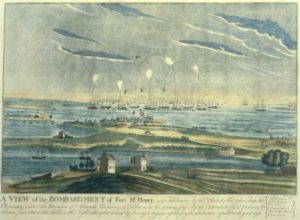
Bombardment of Fort McHenry by the British. Engraved by John Bower
FORT MCHENRY
NATIONAL MONUMENT AND HISTORIC SHRINE
The defense of the fort during the Battle of Baltimore on September 13-14, 1814 inspired Francis Scott Key to write the words that became the U.S. national anthem. The fort’s history holds many other stories too, from the Civil War to WWII.
GEORGE WASHINGTON
MEMORIAL PARKWAY
The George Washington Memorial Parkway was designed for recreational driving. It links sites that commemorate American history and preserve habitat for local wildlife. The parkway and its associated trails provide a scenic place to play and rest in the busy Washington, DC metropolitan area, according to NPS.

Kids riding the Glen Echo carousel, 1960s. Photo from Glen Echo Archives.
GLEN ECHO
PARK
Glen Echo Park began in 1891 as a National Chautauqua Assembly “to promote liberal and practical education.” By 1911, it transformed into DC’s premier amusement park until it closed in 1968. Since 1971, the National Park Service has owned and operated the site and today, with the help of the Glen Echo Park Partnership for Arts and Culture, offers year-round cultural and recreational activities.
NATIONAL HISTORIC SITE
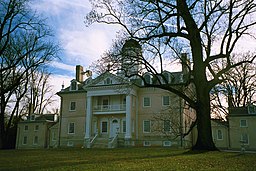
Once possibly the largest private home in America by 1790, the Hampton mansion serves as a grand example of late-Georgian architecture in America. Hampton is also the story of its people, as the estate evolved through the actions of the Ridgely family, enslaved African Americans, European indentured servants, and paid laborers within a nation struggling to define its own concept of freedom.
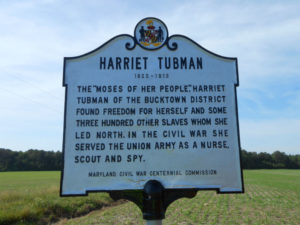
Harriett Tubman highway marker, 2014. Photo from the Maryland State Highway Administration.
HARRIET TUBMAN UNDERGROUND RAILROAD
NATIONAL HISTORICAL PARK
Harriet Tubman was a deeply spiritual woman who lived her ideals and dedicated her life to freedom. She is the Underground Railroad’s best known conductor and before the Civil War repeatedly risked her life to guide 70 enslaved people north to new lives of freedom. This new national historical park preserves the same landscapes that Tubman used to carry herself and others away from slavery.
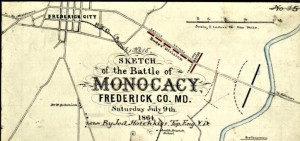
MONOCACY
NATIONAL BATTLEFIELD
During the summer of 1864, the Confederacy carried out a bold plan to turn the tide of the Civil War in their favor. They planned to capture Washington, DC and influence the election of 1864. On July 9, however, Federal soldiers outnumbered three to one, fought gallantly along the banks of the Monocacy River in an effort to buy time for Union reinforcement to arrive in Washington, DC.
PARK
The Fort McHenry flag as photographed in 1873.
STAR-SPANGLED BANNER
Discover the War of 1812 on the Star-Spangled Banner National Historic Trail—a path tracing troop movements through historic places, inspiring landscapes, charming waterfront towns, and waterways of the Chesapeake Bay region.

